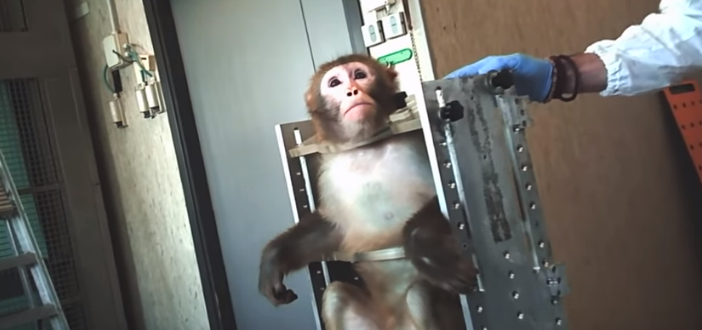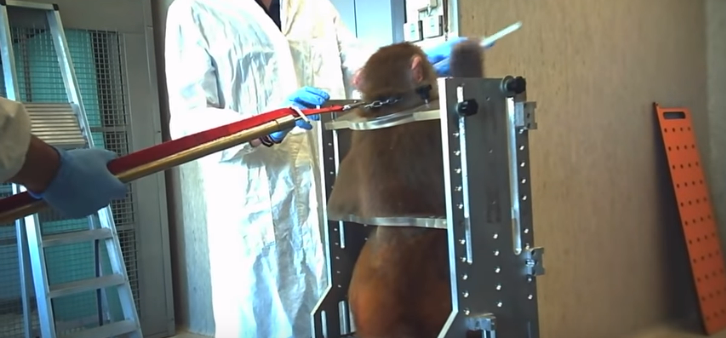In the last weeks, a press release from organization LIMAV (Lega Internazionale Medici per l’Abolizione della Vivisezione) Italia, the International Medical League for the Abolition of Vivisection – Italy Chapter, has spread through the Italian animal protection community, generating frustration and anger.
According to the author, Dr. Maurilio Calleri, veterinarian and president of LIMAV Italia, the University of Turin in collaboration with the University of Parma is leading a research project called “LIGHTUP – Turning the cortically blind brain to see.” In other words, vivisection procedures on macaque monkeys.
This project has been financed by the European Research Council for an amount of 1,994,212 euros, 1,067,288 of which were granted to the University of Turin. The project has also received a favorable opinion from the Superior Health Council and was authorized by the Ministry of Health of Italy.
LIMAV Italia has requested specific details about the experimentation protocol, in order to be able to scientifically assess the experiments. Unfortunately the protocol has not been provided yet, leaving only the non-technical summary of the research project to the scrutiny of the experts.
The research project started in October 2018 and will be completed June 31st, 2023.
The non-technical summary explains the objectives of the project, which are: “to make conscious residual visual abilities made unconscious by a lesion of the primary visual cortex, validating a clinical-rehabilitative protocol applicable to the human patient.”
LIMAV Italia asserts that validating a clinical-rehabilitative protocol that can be applied to humans is not possible in such an experiment on macaques. There are no scientific conditions to do so, such as reproducibility and transferability of findings to the human species, which has very different neurophysiological and neuroanatomical mechanisms from macaques and other species.
Concerning the expected level of suffering, the synthesis says that they expect the macaques to encounter: “1) moderate and temporary stress; 2) post-surgical complications; 3) local inflammatory reactions at the level of the implants.” Immediately after surgery it is written that indeed, “it is considered prudent to estimate the level of suffering expected as serious.”
Moreover, the experiments expect the euthanasia of macaques at the end, so while the research summary claims that the monkeys will be cured of blindness, this is at no long-term benefit to the animals themselves. The two pages of the non-technical summary also contain several errors and contradictions, which highlights the absurdity of having financed, approved and authorized an experiment that will not bring any progress to science, but only pain for the macaques. The researchers themselves define the macaques as having “remarkable anatomical-functional homologies” to humans, which means they are capable of experiencing pain much like us.

A macaque used for these experiments, seen in a cage. Note the medical implant on the left side of the head.
In addition, a press release from May 2019 from the University of Turin asserts that the experiment will be conducted under general anesthesia, and that the scientists will try “to minimize the damage done and the impact of possible adverse event,” because if “this operation has a minimal impact the animal will not be able to see and move normally in the environment, feeding and interacting with its own kind.” This quote suggests their awareness of irreversible and adverse events, which cannot be foreseen in this type of experiments.
LIMAV supports and encourages scientific research conducted through using human-based research techniques, which are based on organs and tissues of human origin or systems that simulate them. These human-based techniques have been demonstrated to have reliable and certain results, and do not harm animals.
We hope to capture the attention of the relevant national institutions and end these experiments on macaques. Furthermore, the funding of the project should be analysed carefully, with attention to how the funding organizations are failing to protect the rights and welfare of animals.
For more information, visit the LIMAV and Essere Animali websites.
Featured image: a macaque used for this cruel project in restraints. This image and all images in this story credited to Essere Animali.








1 Comment
Stop this cruelty at once!